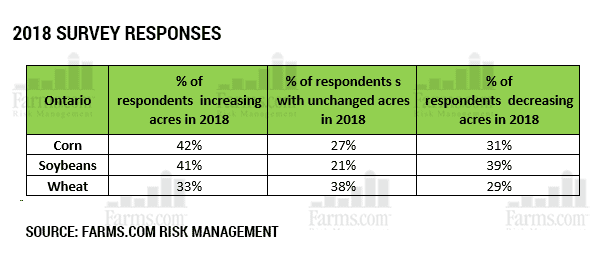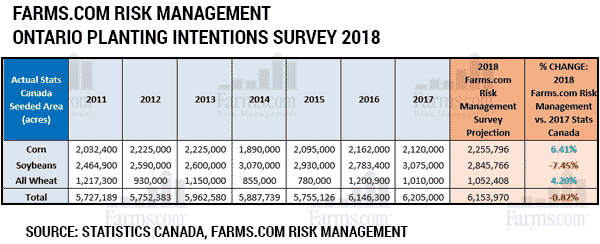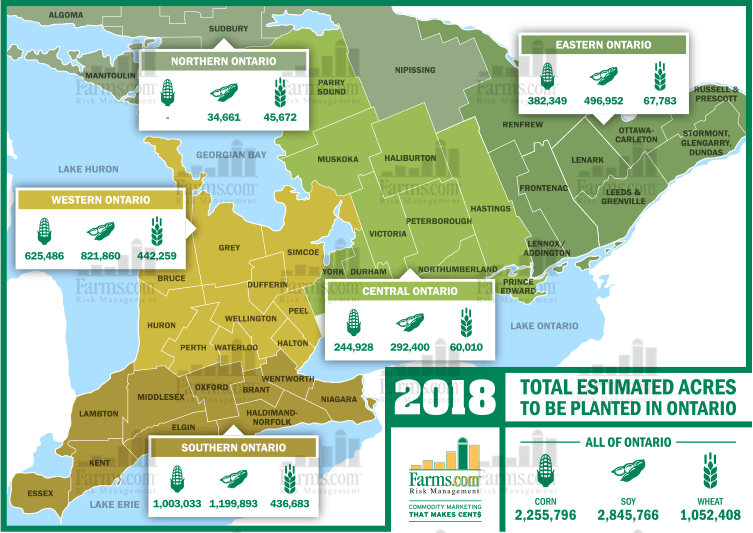On March 29th, 2018, the USDA surprised everyone in its 2018 Prospective Plantings release by reporting U.S. new crop corn and soybean acres at well below trade expectations. Total U.S. principal crop acres fell by 1.16 million year-on-year (Y/Y), to just under 318 million acres (mil acres). 2018 U.S. corn acreage came in at 88.02 mil acres (trade expected range was 87.55 – 91 mil acres), which is down 2.1 million Y/Y, and soybeans at 88.98 mil acres (trade expected range was 89.90 – 92.60 mil acres), which is down 1.16 mil acres Y/Y. The drop reflected a switch to other more profitable crops, with less intensive input costs, and to crops that are less sensitive to any Chinese trade tariff retaliation/backlash.
The Farms.com Risk Management 2018 Ontario farmer survey conducted from February 4th – March 25th, 2018 is suggesting that Ontario farmers intend to plant more corn and wheat acres this year and less soybean acres, compared to Stats Canada’s final 2017 acres

Ontario farmers intend to plant 6.02% more corn acres Y/Y or up +135,796 acres to 2,255,796 acres in 2018, and remain above the 5-year average across all regions of the province. The highest increase is coming from the regions of Central and Southern Ontario. 2018 soybean acres at 2,891,680 will dip back below the 3-million-acre mark and below the 5-year average. This is down -7.46% Y/Y or -229,234 acres, with most of the decline coming from Southern Ontario. Central Ontario, however, is planning on planting 61,700 more soybean acres in 2018. IP soybean acres will also be up +6.67% Y/Y. All Wheat acres will remain above the 5-year average and up slightly Y/Y to 1,052,408 acres. This is up 4.2% Y/Y, with the largest increase seen in both Eastern and Northern Ontario.

A lower Canadian dollar (CDN $) continues to remain friendly for Ontario basis and is the farmers' bonus program that just keeps on giving. However, any extension of North American Free Trade Agreement (NAFTA), being renegotiated by the U.S., Canada and Mexico, by the end of April could see the Loonie jump by as much as 5 cents on a relief rally. But, the exact opposite could happen if negotiations break down. Stats Canada will release their 2018 Principal Field Crops Area report on April 27th, 2018.
Moe Agostino, Chief Commodity Strategist with Farms.com Risk Management, says “weather can still play a key role. It looks like a delayed 2018 planting season as it will remain wet and cold into the month of May. History has proven, however, that what weather does in the months of July, August and September (which is when the crops are in their the most important reproductive stage) is what matters most for final crop yields. These crops are not bullet-proof and dry weather can still impact yields.” A prime example includes the 2018 Argentina corn and soybean crops, which have both been reduced from their initial estimate, thanks to the worst Argentine drought in 100 years!
